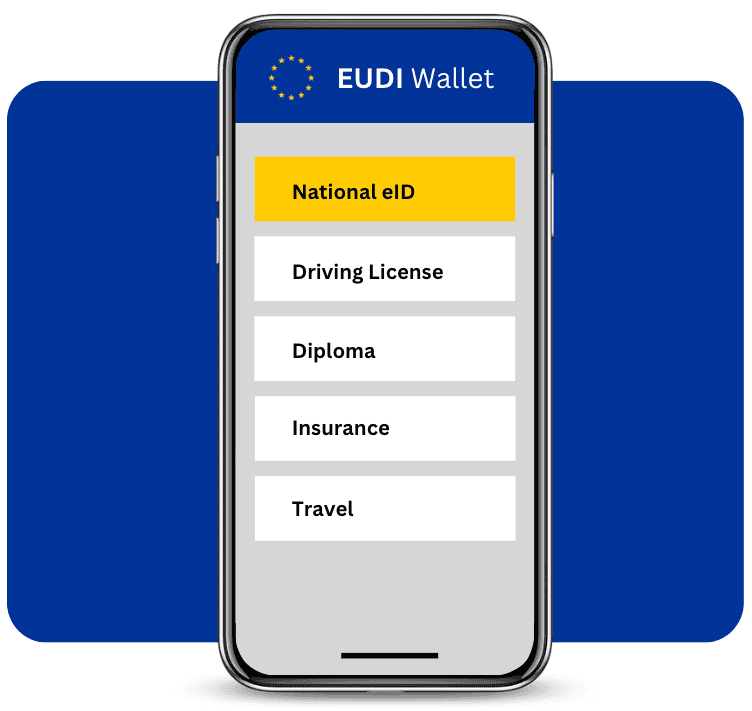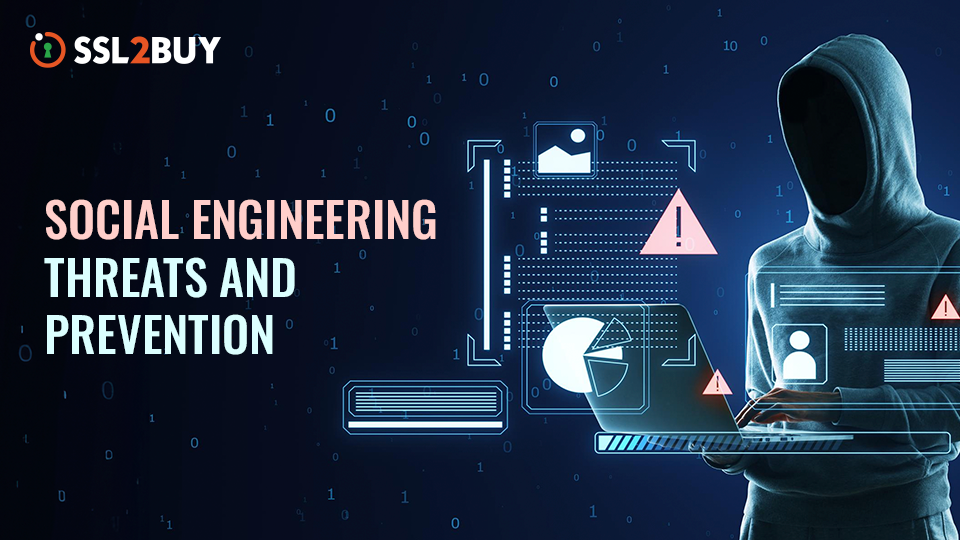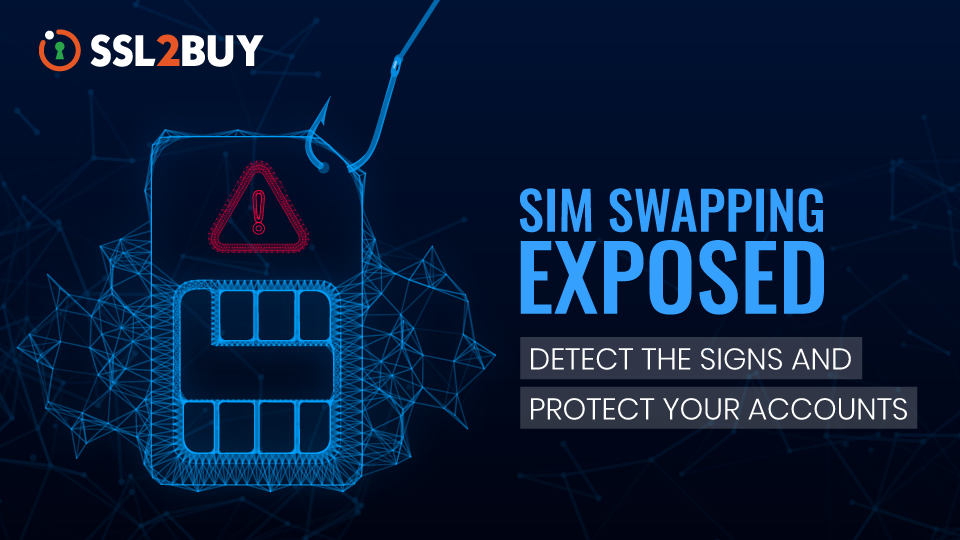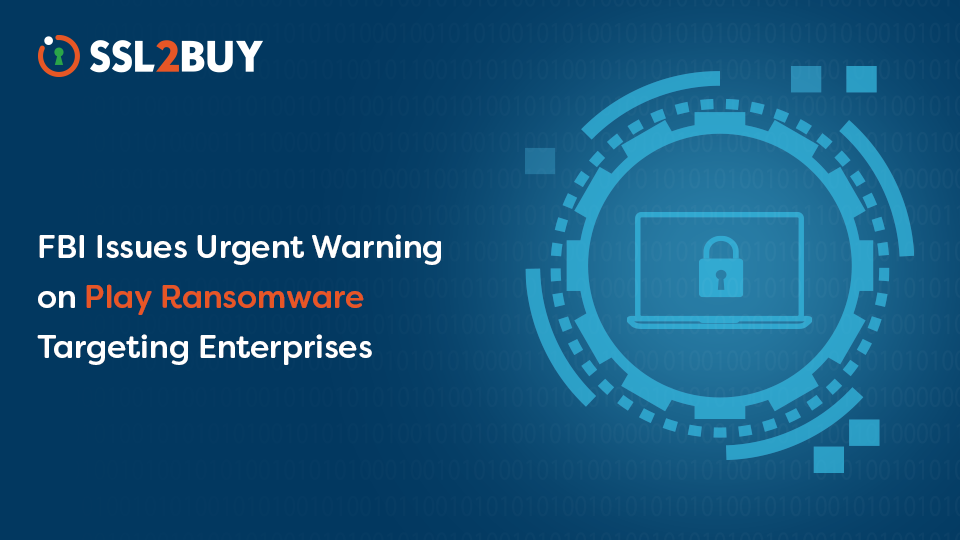eIDAS 2.0 and the Rise of Secure Digital Wallets
Digital identity is becoming important these days. Whether for online banking, online shopping, or dealing with government officials, digital identity helps you to perform transactions securely online.
On the other hand, conventional authentication methods are reaching their limit regarding maintaining security. However, technological advancements have paved the way for advanced approaches to user identification. This advancement adds to the advanced rules, laws, and regulations in the European Union. Also, Germany is changing and must be updated to reflect current situations.
The eIDAS was introduced in 2016 to respond to these advancements. The recent release of eIDAS 2.0 is a significant milestone that created more digital developments.
In this post, you may see the development of the eIDAS and its implications for shaping the future of digital identity.
What is eIDAS 2.0?
eIDAS is called as Electronic Identification, Authentication, and Trust Services regulation and it was introduced to improve Europe’s digital identification system. Later, eIDAS was updated to the latest version which is eIDAS 2.0. The key goals of eIDAS 2.0 are to refine and adapt the existing regulatory framework to keep up with technological changes, to facilitate secure global digital contacts, and to promote interoperability across various electronic identification systems.
eIDAS 2.0 is especially important for groups involved in digital transactions, such as corporations, government agencies, and individuals who rely on digital services. It is critical for ensuring global standardized and secure electronic identification, authentication, and trust services.
eIDAS 2.0 aims to boost confidence in online interactions and facilitate global transactions in an increasingly interconnected European digital realm by addressing the developing landscape of digital identity.
eIDAS 2.0 – Advancing Digital Identity
The need to adapt to the quickly changing digital landscape and the increasing complexity of online interactions drives the progression to eIDAS 2.0. The necessity for an updated version derives from the awareness that technology advances and that legal frameworks must evolve in tandem to handle growing issues and possibilities.
The continual technological improvements, the necessity for enhanced cybersecurity measures, and the desire to improve user experience are key factors driving eIDAS 2.0. The initiative is motivated by a desire to further standardize electronic identification, authentication, and trust services throughout the European digital ecosystem.
As digital transactions become more common, eIDAS 2.0 intends to strengthen security and enhance global interoperability. It also promotes a streamlined and responsive environment for enterprises and individuals.
How is eIDAS 2.0 Different from eIDAS 1.0?
In contrast to eIDAS 1.0, which advocated for persistent, inflexible IDs, the new plan focuses on end-users and incorporates self-sovereign identity (SSI) to provide individuals more ownership and control over their identifying information. This implies that users can choose to provide only the information required for a specific transaction rather than sharing all accessible information.
The eIDAS regulation applies to all EU member countries. The eIDAS Regulation applies to any individual, corporation, or public entity trading online in the EU.
Because all European organizations are expected to comply with eIDAS, any organization with a European presence or doing business with an EU organization must comply with eIDAS. The United Kingdom has similarly incorporated eIDAS into its legal system, however with certain modifications.
Here are some of the notable additions that distinguish eIDAS 2.0 from eIDAS 1.0.
Key Changes and Enhancements
eIDAS 2.0 is distinguished from eIDAS 1.0 by significant upgrades and enhancements. The new version has advanced technological capabilities, enhanced security measures, and a broader scope, including additional global digital services such as authentication and device identification.
Furthermore, eIDAS 2.0’s global architecture provides individuals and enterprises with identity wallets. It allows the creation and use of digital identities without the need for government authentication. These significant enhancements address the constraints of eIDAS 1.0 while also integrating with the dynamic needs of the growing digital ecosystem.
When Does eIDAS 2.0 Enter Into Force?
On November 8, 2023, eIDAS 2.0 concluded interinstitutional talks in the Trilogue phase.
The next stage, projected in early December 2023, is to bring the negotiated document to the Committee of Permanent Representatives (Coreper) for endorsement, indicating that the text has the support of the representatives of the member states.
The compromise wording will then be formalized at the beginning of 2024. This usually entails vote in the European Parliament and approval by the European Union Council.
Once formally enacted, the rule will be published in the Official Journal of the European Union, marking its official entrance into effect, which is expected in the first quarter of 2024.
Member States will have 24 months after the adoption of Implementing Acts outlining the technical requirements for the EU Digital Identity Wallet and the technical standards for certification to give EU Digital Identity Wallets to their people.
It is critical to recognize that the supplied roadmap is a preliminary strategy, and the timing may change as the review and acceptance process progresses.
eIDAS 2.0 regulation is an essential part of its implementation. While implementation dates may vary, the release of eIDAS 2.0 demonstrates a commitment to keeping up with technological advancements. The regulation will most likely be implemented once the relevant infrastructure, systems, and stakeholders have been fully prepared to move to the revised framework.
Major Updates and Changes
-
Technological Advancements
eIDAS 2.0 incorporates the latest technological innovations. It ensures compatibility with contemporary digital systems.
-
Security Measures
The new version introduces essential security measures. It was implemented to address evolving cyber threats and enhance overall system robustness.
-
Expanded Scope
eIDAS 2.0 broadens its scope to cover additional global digital services. These added services are authentication and device identification, reflecting the evolving needs of the digital ecosystem.
-
Responsive Design
The introduction of identity wallets empowers individuals and businesses to create and use digital identities without government verification.
Key Features of eIDAS 2.0
The changes made in eIDAS 2.0 directly respond to the changing needs of the digital landscape. The broader scope recognizes the rising complexity of digital interactions while security measures meet the expanding cyber risks. Responsive design encourages individuals and businesses to manage their digital identities, increasing trust and acceptance.
- eIDAS 2.0 addresses the urge to protect user control and privacy.
- It offers self-sovereign identity technology for establishing a framework for digital identity.
- eIDAS 2.0 can be integrated with the latest technologies like blockchain and cryptography.
- It safeguards third parties from creating fake profiles.
- eIDAS 2.0 is designed to preserve the autonomy of digital identities.
- It enables biometrics to create unique identities for granting and denying access.
Benefits of eIDAS 2.0
The introduction of eIDAS 2.0 extends its access to all EU citizens, residents, and businesses seeking to utilize the European Digital Identity. Here are some of the benefits that you can experience by integrating eIDAS 2.0 in your security protocols.
-
Compliance
Acceptance with the General Data Protection Regulation is a fundamental aspect of eIDAS 2.0.
-
End-user
Unlike the rigid nature of eIDAS 1.0, the SSI structure in eIDAS 2.0 empowers end users, placing them in control of their identifying information.
-
Centralized
The emphasis on ‘sole control’ is a welcomed feature. It allows EU citizens complete control over their digital identity rights and fostering trust and adoption.
-
Trustworthy
User-controlled identifying information encourages adoption and enhances user trust in the system.
-
Upgraded Identification system
eIDAS 2.0 addresses the limitations of eIDAS 1.0 in the private sector. It makes every industry eligible to benefit from specific aspects of the identification system.
-
Interconnected
The regulation facilitates the digital transformation of all sectors. It contributes to a more interconnected and technologically advanced landscape.
-
Secure Self-Sovereign Identities
SSIs in eIDAS 2.0 validate only essential aspects of a transaction. It ensures authenticity while respecting customer privacy through cryptographic proofs.
-
Blockchain integration
With blockchain’s decentralized principles, eIDAS 2.0 epitomizes the pinnacle of consumer privacy and security.
-
Qualified Electronic Signatures
The accompanying wallet in eIDAS 2.0 allows users to generate and utilize Qualified Electronic Signatures accepted throughout the EU.
-
Robust Security Features
eIDAS 2.0 introduces robust security features for the storage and application of services. It enhances overall security in the digital identification process.
eIDAS 2.0 – Technical upgrades
eIDAS 2.0 intends to reduce the difficulties and impediments that the previous legislation imposed on the private sector by establishing more precise technical and operational criteria and recommendations for the use of electronic identity and trust services. This will aid in the reduction of online fraud, the protection of private rights, and the enhancement of openness.
-
ID wallet
A primary innovation within the framework of eIDAS 2.0 involves the anticipated rollout of a digital wallet, alternatively referred to as an ID wallet or EUDI wallet. This software is downloadable for individuals and businesses, allowing them to install it on their smartphones.
Users can securely store and oversee their certificates and supporting documents related to electronic identification and trust services within this digital wallet. This facilitates users in maintaining a comprehensive overview of their digital identity data, ensuring convenient access whenever needed.
-
QTSPs
Another significant change brought about by the eIDAS 2.0 law is the creation of “Qualified Trust Service Providers” (QTSPs). QTSPs play an important role in the new law because they will ensure that the digital identities permitted comply with the updated regulation.
In order to establish compliance with the eIDAS high level security standards and duties, the eIDAS 2.0 regulation defines qualified trust service and Qualified Trust Service Provider. Only a Qualified Trust Service Provider can provide qualified trust services.
As expert suppliers providing secure electronic transactions such as electronic signatures, digital certificates, or timestamping services, QTSPs must meet various security standards. Strong cryptographic algorithms, authentication techniques, individual transaction audit trails, and a secure system design are all required.
-
Decentralized Identity
By merging the existing trust model from eIDAS 1.0 with the SSI approach, eIDAS 2.0 may provide legal trust in decentralized digital identities. The SSI method is decentralized, meaning individuals do not rely on a third-party source.
Instead, individuals can use cryptographic techniques to securely keep their identity information on their devices. The goal of decentralized identification principles is to allow the end user freedom of choice and control. This shift toward user-controlled identity management aligns with modern privacy expectations.
eIDAS 2.0 – A Approach to Legal Trust in Decentralized Digital Identities The goal of decentralized identification principles is to provide the end user with freedom of choice and control over their identity information.
eIDAS 2.0 – Implications for Businesses and Users
For Businesses
eIDAS 2.0 has a substantial influence on enterprises that rely on electronic identity and trust services by developing a comprehensive and standardized framework. The legislation imposes severe compliance standards. It provides a consistent approach across EU member states. For businesses:
-
Enhanced Security and Reliability
eIDAS 2.0 raises the bar for security, ensuring a robust electronic identification and trust services environment. Standardized procedures of eIDAS 2.0 increase the dependability and integrity of digital transactions.
-
Streamlined Global Operations
The regulation reduces complexities associated with global transactions. A more integrated digital landscape is promoted by standardized electronic identification procedures, which enable companies to grow their activities across EU member states with ease.
-
Legal Validity and Compliance
eIDAS 2.0 ensures the legal validity of electronic transactions, including electronic signatures and other trust services. This reduces legal uncertainties and improves compliance with regulatory standards.
-
Efficiency Gains in Processes
Businesses experience efficiency gains in various processes, such as customer onboarding, contract signing, and data verification. Consistent procedures result in a more streamlined and effective digital workflow as well as time and money savings.
For Users
Users in the digital ecosystem also experience notable benefits and challenges as a result of eIDAS 2.0:
-
Increased Trust and Control
Users benefit from heightened trust in online interactions due to the enhanced security measures. Digital wallets encourage openness and responsive design principles which allow people more control over their digital identities.
-
Efficient Digital Transactions
With standardized electronic identification, users can engage in digital transactions more efficiently. Procedures like online shopping, internet banking, and using government services get easier to use and more seamless.
-
Privacy and Data Protection
eIDAS 2.0 emphasizes privacy by design. Users can expect enhanced data protection measures. It ensures their personal information is handled securely and respects privacy norms.
-
Adaptation Challenges
Users may face initial challenges adapting to new processes and tools introduced by eIDAS 2.0. It can take some time for them to become acquainted with identity wallets and updated authentication techniques.
International Collaboration
eIDAS 2.0 demonstrates a commitment to international collaboration by integrating with global standards and legislation in digital identification and trust services. The rule stresses interoperability, recognizing the interrelated nature of today’s digital landscape.
This alignment promotes collaboration between the European Union and other areas, establishing consistency in electronic identification procedures and enabling global commerce. eIDAS 2.0 is a progressive and adaptive framework in the worldwide context of digital identity and trust services.
By conforming to international norms, the rule aims to set a precedent for secure and consistent electronic exchanges within the EU and in partnership with partners globally. This global orientation increases the possibility of coordinated digital practices, which benefits organizations and individuals involved in international transactions and relationships.
eIDAS 2.0 Use Cases and Applications
-
Open a Bank Account
An EU citizen relocates to a different member state. With eIDAS 2.0, individuals can electronically verify their identity and submit the necessary documents for opening a bank account remotely. This ensures a seamless and secure process, reducing the need for physical presence.
-
Rent a Car
A traveler plans to rent a car in a different EU country. Leveraging eIDAS 2.0, the person can electronically authenticate their identity, sign the rental agreement with a qualified electronic signature, and access the rented vehicle without extensive paperwork.
-
Checking into a Hotel
A tourist arriving from another EU nation uses eIDAS 2.0 to check in to a hotel electronically. The secure authentication process ensures a swift and contactless experience, enhancing convenience for the guest and the hotel staff.
-
Filing Tax Returns
Individuals working in one EU member state but residing in another can use eIDAS 2.0 to file their tax returns electronically securely. The regulation ensures the authenticity of the submission, streamlining the tax process and facilitating compliance with global tax regulations.
How to Prepare for eIDAS 2.0 Regulation: Step-by-Step Checklist
Preparing for eIDAS 2.0 implementation and integrating authentication via digital identity wallets necessitates a complete approach that addresses data privacy, security, and user experience. Collaboration between legal, IT, and product teams is critical for successful deployment and continuing compliance.
Step 1: Understanding eIDAS 2.0 Requirements
Begin by gaining a solid understanding of the eIDAS 2.0 regulation and its specific requirements for your organization. These are the key resources:
- ‘EU Legislation in Progress’ briefing
- Legislative Train Schedule,
- Read the ARF (Architecture and Reference Framework) to learn the technical requirements of your chosen technology.
Step 2: Building a Pilot
Conduct a pilot project to examine the feasibility and acquire insights before implementing decentralized identity technology across the enterprise to comply with eIDAS 2.0. This includes:
- Review current systems
- Developing specific use cases
- Identifying stakeholders
- Selecting the best technology partner
- Planning and designing
Step 3: Incremental Scaling
After a successful pilot, gradually expand the use of decentralized identification technologies to new use cases or a broader user base. To maintain compliance with eIDAS 2.0, educate staff, raise user awareness, and implement continual monitoring and auditing methods.
It’s important to start working on this process as early as possible because it can take a lot of time to complete. By testing and improving your systems now, you’ll be better equipped to handle eIDAS 2.0 when it becomes fully effective in the future.
Challenges and Solutions in eIDAS 2.0 Implementation
The most considered challenges for eIDAS 2.0 are ensuring that the regulation is applied consistently throughout all EU member states. The first deployment of eIDAS varied between member states, resulting in discrepancies and challenges in accessing electronic identification and trust services.
Challenge 1: Individual Wallet IDs
It has been proposed that each EU Digital Identity Wallet has a distinct identification. It’s difficult to imagine that this is coming from the same nation that has severe regulations against tracking cookies.
Solution
A unique wallet identification offered by eIDAS 2.0 functions similarly to a global super-cookie. It would allow you to track, correlate, and profile everything you do with your EU Digital Identity Wallet. It’s a terrible concept. It must not occur. It is the incorrect answer to a problem that might be solved much more effectively.
Challenge 2: Kill Switches for Remote Wallets
The concept of a unique wallet identifier appears to stem from the need for a remote wallet “kill switch” to allow a wallet provider (e.g., your government or a private sector wallet developer) to lock and burn your wallet if it is lost or stolen in order to protect the eIDAS credentials contained within.
Solution
Rather than deleting the whole wallet, eIDAS 2.0 can revoke the credentials that are causing the issue.
Challenge 3: Restrictions on Wallet Content
Any such eIDAS-capable wallet should be a container that allows users to securely store all types of credentials in order to be really helpful to all Europeans. It should not be limited to only having eIDAS credentials issued by recognized “Qualified Trust Service Providers” (QTSPs).
Solution
The eIDAS 2.0 enables users to store and utilize non-eIDAS credentials for any purpose. The wallet must allow characteristics from eIDAS and non-eIDAS credentials to be merged in a single transaction as well as allow subsets of data to be shared rather than all attributes in a credential.
Challenge 4: Restrictions Imposed by the Private Sector
If hurdles to private sector usage of eIDAS 2.0 are erected, it will suffer in the same manner that eIDAS 1.0 did. People seldom interact with their government. And when they do, it’s usually for something they despise, like paying taxes, penalties, or other bureaucratic tasks. Many government use cases, while vital, are neither thrilling or fascinating to individuals.
Solution
eIDAS 2.0 verifies companies that wish to request and verify credential data from their customers/users prefers that issuers already exist. Issuers desire verifiers (governments and other organizations that issue credentials like banks, airlines, and utility corporations). The eIDAS 2.0 plan should result in the issuing of very high-quality digital credentials that all verifiers and relying parties are seeking and anticipating.
Global Implications of eIDAS 2.0 On an International Digital Identity
eIDAS 2.0 is a set of policies designed to improve digital interaction security, usability, and fraud prevention. eIDAS 2.0 promises to provide users more control over their personal information and the data they share with services. It also aims to establish self-sovereign legal trust in decentralized digital identities.
The global implications of eIDAS 2.0 on international digital identification are significant, signifying a shift toward more standardized and secure electronic interactions. As the European Union develops its electronic identity and trust services framework, it establishes a pattern for international collaboration. eIDAS 2.0 conforms to worldwide standards.
It promotes interoperability and facilitates global transactions. Its emphasis on security and responsive approaches establishes it as a global paradigm for digital identification systems. The regulation’s impact goes beyond EU boundaries, affecting international talks on digital identification standards.
eIDAS 2.0 helps a more connected and secure global digital world, where consumers and organizations may manage digital interactions with greater confidence and trust, by encouraging a standardized approach.
Conclusion
The demand for robust and secure digital identification solutions grows as the digital transition proceeds. eIDAS 2.0 upgrades the existing architecture and makes it more responsive and safer for consumers and enterprises.
The eIDAS 2.0 Regulation is an important step in the EU and establishes a trustworthy and secure environment for electronic identification and transactions. The ability to employ easier and more secure digital services can benefit both businesses and individuals.





